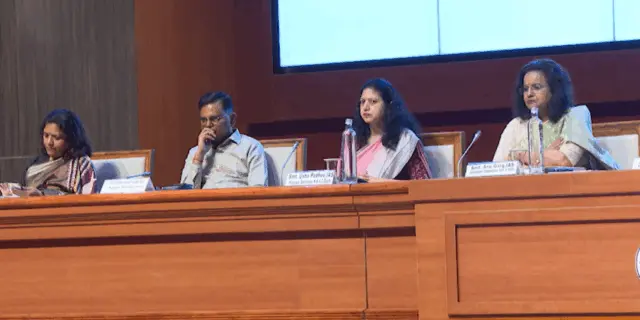Odisha, NITI Aayog Chart Roadmap for Bhubaneswar-Cuttack-Puri-Paradip Economic Corridor

Focus on sustainable growth and Odia identity in economic roadmap
Bhubaneswar: The Odisha government, in partnership with NITI Aayog, convened a Stakeholder Consultation Meeting on the Bhubaneswar-Cuttack-Puri-Paradip Economic Region (BCPPER), aiming to chart a future-ready growth plan for the state. The session, chaired by Development Commissioner Anu Garg, drew senior officials, industry leaders, academics, and civil society representatives for deliberations on the proposed Growth-Hub Economic Plan.
Emphasis on Odia Asmita in Development
In her inaugural remarks, Usha Padhee, Principal Secretary of Housing & Urban Development, underscored the importance of sustainable development that respects Odisha’s cultural ethos. She said the BCPPER initiative must be rooted in “Odia Asmita,” balancing economic progress with cultural preservation. Padhee noted that the plan echoes the Prime Minister’s vision of a Viksit Bharat, where regional identity strengthens national growth.
NITI Aayog’s Growth-Hub Strategy
Delivering the keynote address, Anna Roy, Principal Economic Advisor at NITI Aayog, described BCPPER as a transformative growth hub with the potential to steer Odisha’s long-term economic journey. She projected the corridor as a driver of a USD 500-billion economy by 2036, contributing significantly to the state’s aspiration of becoming a USD 1.5-trillion economy by 2047. Roy stressed that the four cities together form a “synergistic cluster” critical for industrial, cultural, and social progress.
Preserving City Character Amid Growth
Development Commissioner Anu Garg highlighted the uniqueness of the four cities—Bhubaneswar as the knowledge and IT hub, Cuttack as the judicial and historical centre, Puri as a global tourism and cultural capital, and Paradip as the industrial and maritime gateway. Garg cautioned that while pushing for rapid urban and economic growth, the distinct character of each city must remain intact.
Wide-Ranging Stakeholder Participation
The open forum saw strong participation from senior state officials, including Sanjay Kumar Singh (Works), NBS Rajput (Public Enterprises and CMD, OSRTC), Chithra Arumugam (Labour & ESI), and Guha Poonam Tapas Kumar (Handloom & Textiles). Representatives from academia, industry associations, and resource organisations also joined the discussion, offering diverse perspectives on how to shape the region’s growth blueprint.
Focus on environment, tourism, housing, and innovation
Stakeholders underlined the importance of protecting the environment and promoting climate-resilient infrastructure as the foundation of the corridor’s development. They stressed the need for stronger investment in research, innovation, and start-up ecosystems to ensure Odisha keeps pace with global trends. Participants also suggested creating thematic tourism circuits linking heritage, culture, and nature to attract both domestic and international visitors. Another area of focus was waste management and the need to improve neighbourhood-level amenities in rapidly urbanising regions. Health infrastructure, too, was seen as a priority, with calls for expanded healthcare services and better social facilities. In addition, the consultation highlighted the importance of community-based planning and affordable housing projects to ensure that the benefits of growth reach all sections of society.
Roadmap with Priority Projects and Reforms
The BCPPER blueprint already lists over 65 priority projects and 37 policy reforms across sectors such as infrastructure, logistics, industry, tourism, and social services. Inputs from the consultation will refine this roadmap, ensuring that Odisha’s growth trajectory aligns with both national economic goals and local aspirations.
A Vision for Balanced and Inclusive Growth
The consultation reinforced the state’s vision of making BCPPER not only an engine of economic growth but also a model of inclusive, environmentally conscious, and culturally grounded urban development. Officials emphasised that the corridor’s success will depend on collective effort—where government, industry, and citizens collaborate to create a vibrant and resilient economic hub.









